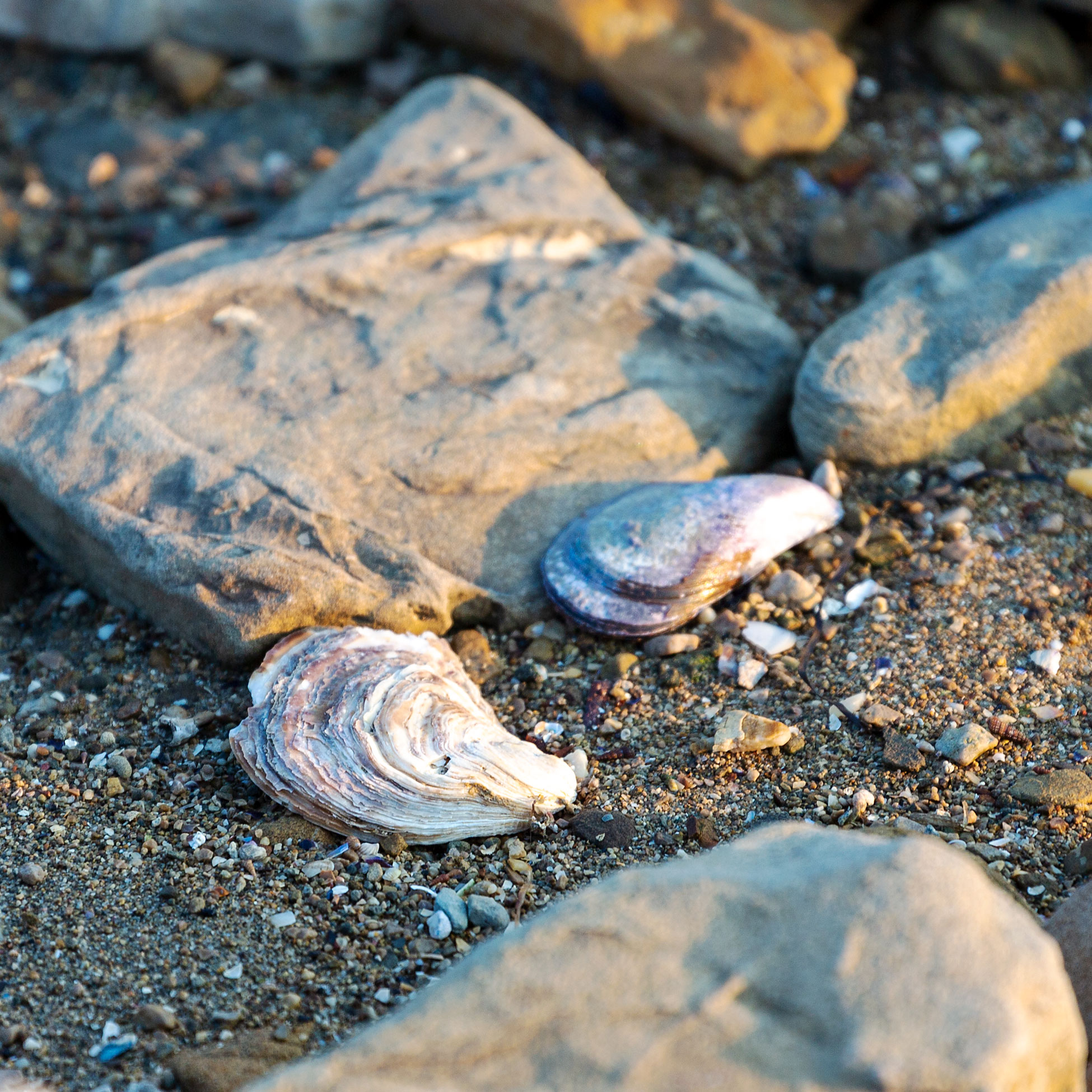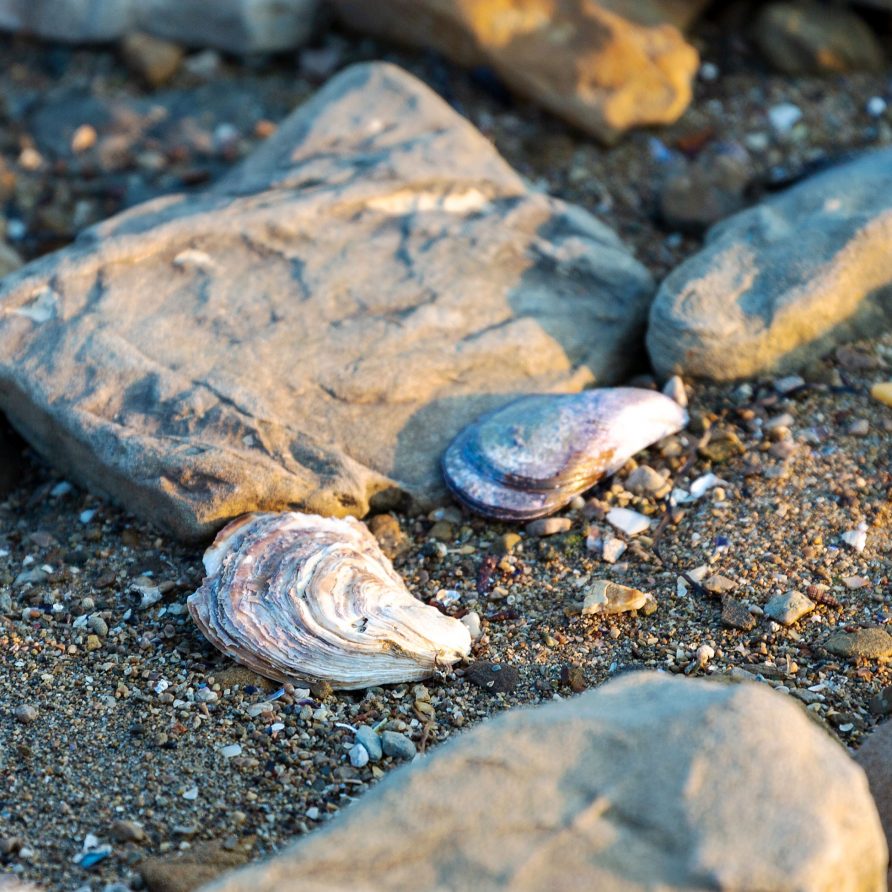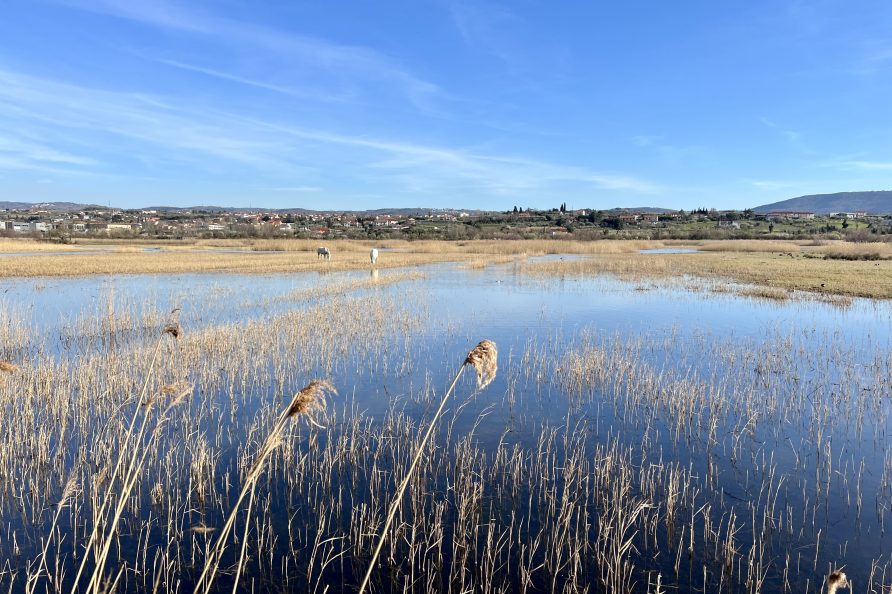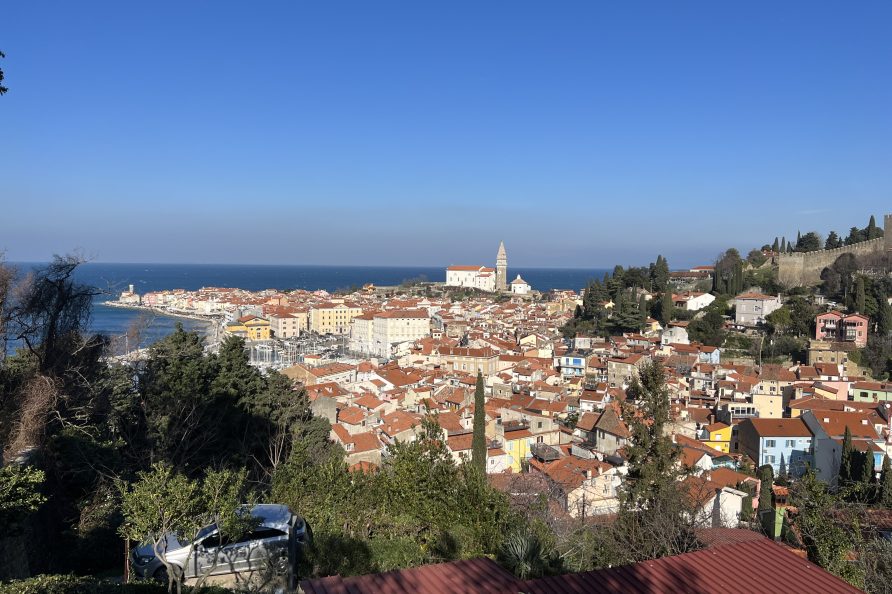Ankaran’s Shell Dune or better know by the locals as The Shell Cemetery is part of the coast where you can find a huge variety of shells and snails. The shell dune is 170m long and is located between Ankaran and the Port of Koper. It was created by deepening the seabed for the needs of the 2nd pier of the Port of Koper in the 1990s. At that time, sludge was pumped to a nearby location next to the Rižana river estuary. The rain and the river gradually washed away the mud and only the shells of the mollusks remained. Due to its extremely easy accessibility, it will certainly brighten up your afternoon and offer you the opportunity to spend an hour or two in nature. Indulge in exploring shellfish, snails, birds and seaside plants.
Shell Dune – where it is located?
GPS coordinates: 45.569638, 13.742869
On the way to Ankaran, turn left for St. Catherine. You can park in the parking lot next to the Ankaran – Hrvatini football field. In September 2020, they introduced the payment of a parking fee of 2 euros per hour. You can also pay by using the EasyPark application.

The riparian swamp at Sv. Nikolaju – Mediterranean salt meadow
This saline meadow is included in the Natura 2000 ecological network. There are fewer and fewer such meadows in Europe. This meadow is the only one in Slovenia. This special type of meadow developed on muddy, moist and saline soils at Sv. Nikolai. Only plants that love salty soils thrive here. Thus, in addition to the typical coastal waters, the coastal sky, sea oman, blue wormwood and cornut plantain also thrive here.
The seashore, or Juncus maritimus in Latin, is recognizable by its tall stems that grow in tufts and have tiny brown flowers that are grouped in panicle-like inflorescences. some types of locks have very solid stems that they use to weave baskets and chairs.

Shellfish and snails

The shell dune is a real rarity in Europe and that is why these 170m of coastline are really something special. In fact, there are only two known shell dunes in Europe. One is in Spain and the other is here. The Spanish dune is smaller and has fewer different species of shells and snails. That is why we should be even more careful about our dune and be careful not to crush the fragile shells and take them with us. Experts have listed 234 different types of snails here. Those more experienced shell collectors, you will find Peter’s ear, pelican’s feet, scallops, prickly wolf…
The shell dune is full of life

When summer slowly turns into autumn, we are always visited by swans, which take advantage of this piece of coast for their outpost on their long journey. During this time, we can always find at least a few of them bathing, cleaning, feeding, and enjoying themselves. Locals and passers-by are impressed with their beauty and grace. Connoisseurs have observed more than 30 species of different birds in the area. So it really pays off to spend some time in silence and indulge in observing the surroundings. You never know which bird will surprise you. For those most ardent bird watchers, we invite you to visit the Bay of Scotland.
We would like to draw the attention of all visitors to the notice on the website of the Ankaran municipality: “ We want the shell dune to remain on display for future generations, so we kindly ask visitors to just view (and photograph) the mussels and not to pick them up or destroy. “



